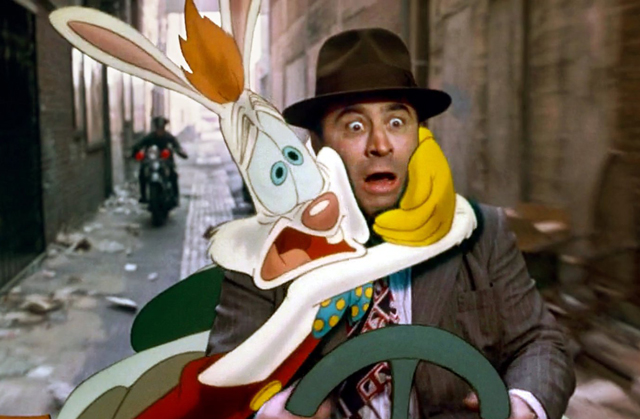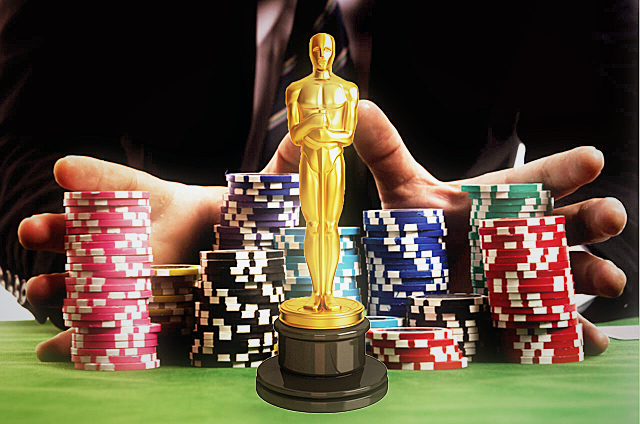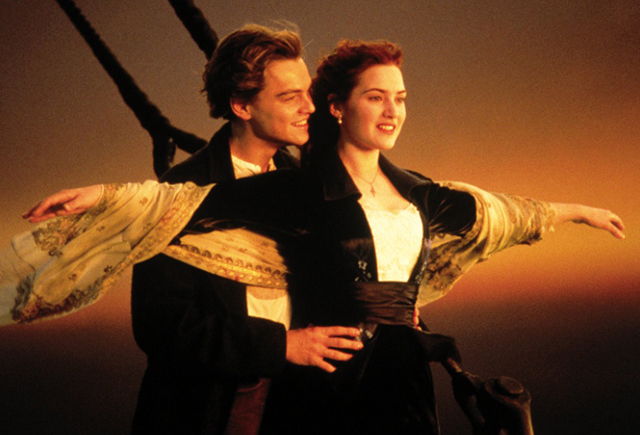
If there is a single constant in the world of entertainment, it’s that it is ever changing. Every new era we live in sees advancements in technology, and those advancements in one way or another will somehow change the way we live and in turn how we entertain ourselves. We live in a world right now that has the most advanced access to communication that history has ever known, and it will only grow more sophisticated over time. In addition to the abundance of online access as a way of communicating to others, we have also seen in the last decade the rise of online streaming as a way of sharing content with the world. Whether it is through our own videos published online through places like YouTube, or streaming channels like Netflix, Amazon or Hulu, more and more people are finding their entertainment online rather than through traditional broadcasting. And this is a change that the entertainment business is still trying to come to terms with. Before the internet began to change the patterns of human behavior, Hollywood could easily gauge the pulse of their audience by following the box office returns in the movie theaters, or collect the ratings from the Nielsen programming charts with regards to television. But today, streaming content lives by a different set of rules, where people have more choice in what they want to watch and when they want to watch it, with the actual numbers of viewership being kept a closely guarded secret within the different streaming corporation. As a result, you have new giant players in the entertainment business taking advantage of their head start and inside knowledge of a new form of entertainment that Hollywood and the rest of the industry doesn’t quite understand yet.
What has really been shaking the film industry lately is the meteoric rise of Netflix in the last few years. Started in Silicon Valley in 1998, Netflix grew from a simple website specializing in video rentals to a full blown movie studio in just a short 20 year span. Their DVD rental by mail service of course is what got them on the map to begin with (and led to the eventual downfall of once unstoppable rental giant Blockbuster Video), but it was their introduction to streaming on demand content that really propelled them further. First, it began with streaming movies that were already licensed out to them, but then Netflix took the bold step of deciding to create original content for their subscriber base to access. They began with original shows, but later went on to producing original films, as well as buying up independent productions from festivals and the international marketplace. All this has led Netflix to becoming a major player in Hollywood, with exclusive content being added to their platform on almost a daily basis. They are now attracting the likes of Martin Scorsese, the Coen Brothers, and many more high profile filmmakers to joining their roster of content makers, giving them the kind of prestige that normally is reserved for the biggest studios in the industry. But, more than all that, they have effectively changed the way that we are consuming media today. The Netflix model is now starting to become the norm in society today, as more and more people are choosing to watch their shows and movies from the comforts of their own home and on their own schedule. It’s far more convenient for audiences to click and watch something immediately through their Netflix page, rather than having to look up the showtimes of their local theater or planning their day around the scheduled broadcast of their favorite show. And by servicing this preferred way of watching media, Netflix has been able to prosper. But, the question has also been raised questioning Netflix’s role in entertainment; if it plays online and never gets screened in a theater for an audience, should it still be considered a movie?
That is the question that is being raised right now in the industry, and one that has caused a rift between the traditional system of film distribution and Netflix’s online empire. Just this last week (as of this writing), Netflix decided to pull several of their films from screening at the prestigious Cannes Film Festival in France. This was in response to rule changes made by the festival that required the films in contention to have a scheduled release in French theaters within the same year. This of course goes against Netflix’s business model, which is that everything they produce is exclusive to and can only be accessed through their site, which would be pointless if the film was also available elsewhere in a local theater. Though Netflix was still allowed to screen at the festival, their streaming only rule prevented them from competition, so the company chose to remove themselves completely out of protest. In the long run, this decision won’t hurt Netflix in terms of revenue, but it is a slap in the face to the filmmakers who were eager to have a presence at this year’s festival, including Oscar-winner Alfonso Cuaron, who was sad that his new Netflix produced film Roma was not being screened because of this boycott. But the one point that Cannes’ decision is making with their new rules is to state a standard for what is considered a movie or not. For the many years that the festival has run, movies have been screened for audiences in theaters, and this has been the norm of the industry for decades. It’s something that Netflix can’t duplicate with their on demand services, because a theater experience is certainly a lot different than a home viewing experience, and some believe that this is crucial to how we judge the quality of a film in the end. Steven Spielberg also recently put in his two cents, stating that if a movie is shown only on television through Netflix or other streamers, it is therefore a TV movie and should not be eligible for accolades like Oscars of Cannes’ Palme d’Or, which are given out to theatrical films.
Though there is validity to what Cannes and Spielberg are arguing about what constitutes a cinematic experience and what doesn’t, there is the counterpoint that states that the traditional way of watching a movie is evolving and that a theatrical experience may not be the norm in the future. Netflix could indeed be positioning themselves for a New Hollywood of the future that will see more and more premieres of movies online than in regular brick and mortar movie theaters. Though the shift hasn’t happened yet, as most theater chains are still seeing good business thanks to blockbusters like Black Panther currently, the gap between theatrical and home video releases are becoming shorter and it may be only a matter of years before the middle man is cut out completely and even big blockbusters make their premieres online instead. From then on, theatrical experiences will turn into a novelty rather than the standard for entertainment, and many businesses that are reliant on the model as it is now will quickly disappear because they couldn’t adapt. Remember, Netflix has crushed another industry before (Blockbuster) through their ability to read the signs of a changing culture, and they are very capable of rising above the heap of another un-adaptable industry in the future. But, to take stock in what Spielberg and other skeptics have said, if the old standards mean nothing in the end, then what can we honestly call cinema as a result. To be considered for accolades that have existed for several decades, these movies from streaming services must adhere to the same rules that all the other past winners have, and that puts places like Netflix at a crossroads. Do they bend to the rules of the past, or do they make the rules bend to them?
The notion of a New Hollywood emerging out of this conflict is something that is causing a lot of friction in Hollywood today. Some in the industry are going to fall behind, without a doubt, and those who adapt will find themselves in a far different position than when they started out. The studios for instance are already going through some of those changes. Everyone from Warner Brothers, to Paramount, to Sony, to Disney and Fox are expanding their online presence and working to increase their output to reach the new crop of online viewer, sometimes in partnership with places like Netflix and in other places in direct competition. The recent and still processing acquisition of Fox by Disney may in fact play into this as well. Disney recognizes that the business is changing, and that Netflix may not just be a producer of films in the future, but perhaps could be a mega-studio that dictates both what gets made and how people get to watch it in difference to what they themselves wish to make. So, once the Fox Studio went on the market, Disney made their bold move to acquire it as part of it’s own media empire. Some have speculated that this is Disney creating a Hollywood monopoly, but I personally believe that this is them and Fox preparing themselves for the New Hollywood that will emerge through the influence of Netflix. Disney has already announced that they are ending their current partnership with Netflix and will launch their own streaming service in the near future. Considering that this new Disney streaming channel will now have two studios worth of exclusive content tells me that this is their attempt to be prepared for this change in the industry, and indicates to me why Fox felt more inclined to merge with them than they would’ve a few years ago. Better to face this new world as partners than to fend off the unknown all by yourself.
But, apart from joining forces to create a new mega corporation that can live longer in a reforming industry, there are other things that Hollywood can take into consideration in order to balance out the changing tide of streaming content. What has helped Netflix to prosper in such a short time is their ability to draw top tier talent to their company. The fore-mentioned Scorsese and Coen Brothers are also following in the footsteps of fellow prestigious talent like David Fincher, Noah Baumbach, Joon-ho Bong, and many other celebrated artists who have taken their new projects directly to the distributor, even with their insistence on streaming only presentations. And this is largely due to Netflix more lasse faire and risk-taking attitude towards the content that is produced. They are production company with deep pockets that allows for more creative freedom than most other studios are capable of giving. With that in consideration, who wouldn’t want to go to Netflix with their new movie or show idea? Even Spielberg stated that he’s still open to working with Netflix in the future on some project despite how he feels about their eligibility for Oscars. Mainly the reason why Netflix allows for this kind of creativity is because they don’t have to follow the same rules as the rest of Hollywood. They don’t have to focus group their movies to ensure that they appeal to the widest range of cinema goers across the country. If they believe that a project is good enough, they will make it and put it on their channel and make it available to anyone interested, which often is helped when it’s got a big name attached to it. For Netflix, it’s not a race to box office grosses or ratings, but instead about growing their subscriber base, which is helped out with a diverse set of exclusive content. The beneficial result of this is to change the other studio’s preconceptions of what is popular with audiences and convince them to up their game and compete with more creative freedom within their own company. Those who can’t see the benefit of Netflix’s risk-taking and only choose to play it safe will only isolate themselves further in the changing market.
But, Netflix can also box themselves in if they are too insistent on their platform becoming the new standard. Because, even despite the change that the industry is going through, there will still be a place for the traditional cinematic experience. Cinema has faced the onslaught of changing technology before, especially with the introduction and normalization of television in the 1950’s, and it’s continued to prosper ever since. The reason for this has been the enduring appeal of an in theater experience. When television began to challenge the theater business, they answered by widening the screen and making new films feel like an event worthy of leaving home and the TV alone for a couple of hours. The era of blockbusters in the 80’s and 90’s also helped to counteract the rise of home video, which brought a whole new way of watching movies into the average household across the world. Hollywood even managed to marginalize direct-to-video entertainment, showing that it was in no way the same as seeing a movie in the theater. Netflix provides more of a challenge to the theater business than most other things before, but again, competition does spur on innovation, and I can see the theater business evolving in this new era as well. In a way, it’s something that already distinguishes Netflix from it’s most direct competition. Amazon Studios releases all of their movie theatrically before putting them on their streaming service and not on home video, which has helped them to gain an edge over Netflix in the accolades department, having more nominated films so far than the other thanks to films like Manchester by the Sea (2016) and The Big Sick (2017). And with future competitors like Disney/Fox, Apple, and AT&T’s Time Warner conglomerate emerging, all of whom which have long standing partnerships with theater chains across the world, Netflix could find itself lacking in marketplace that might thrive well enough without them. My guess is that Netflix could indeed enter the theater business itself if it wanted too, by buying up or starting their own theater chain; though this might run the risk of violating anti-trust laws that dismantled the studio system in the 1950’s. As it shows, the advancement of a New Hollywood in the years to come could prove to be problematic, even with a leader like Netflix.
There is no doubt that we are right now witnessing the infancy of a new world order in terms of how Hollywood and the entertainment business will function in the future. It may not be at the top just yet, but Netflix is quickly becoming the leader in this New Hollywood movement and it remains to be seen just how much of an impact they leave on the business as a whole. Netflix is already making it’s case in Hollywood by gaining a strong foothold within the industry. They have already moved their headquarters from the Bay Area to the heart of Hollywood; buying up the legendary Sunset Bronson Studio Lot on Sunset Boulevard and building a massive new tower that bears their name and looms large over the ever busy 101 Hollywood Freeway. And you’ll be hard pressed not to find a picture online of Netflix CCO Ted Sarandos where he’s socializing with some of the biggest names in Hollywood. This is company that clearly has it’s eyes on broadening it’s presence in Hollywood and emerging as the industry leader once the market moves closer to streaming exclusively over releasing theatrically. Even still, Hollywood is changing alongside Netflix, and we are already watching that evolution take some dramatic steps. Disney and Fox will soon become one entity and other major studios may either consolidate to compete and start their own streaming service, or fall off completely. In a decade or so, the “Big Six” studios as we know them now could end up becoming the “Big Three”, with maybe even Netflix or Amazon becoming majors themselves. This is all speculation, but there are clearly many things that Netflix is already changing about Hollywood that could lead them down this road. They have the benefit of artists being attracted to their more lax restrictions and interference, and the convenience of their service is also appealing to audiences. But, they’ll have to deal with the question of whether or not what they are making is considered a movie at all based on the standards that the industry has been built upon. They may have to adhere to what Hollywood is now, but only until Hollywood becomes like them in time. Then it won’t matter what screen it’s presented on; Netflix and it’s ilk will be our window into the world of cinema for the internet based age that’s going to shape all of us for generations to come.








